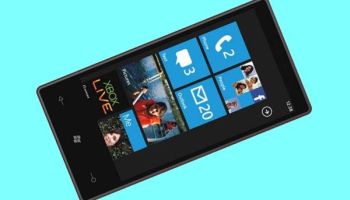Microsoft’s Windows Phone 7 faces a steep uphill climb for consumer adoption, with the latest numbers from research firm NPD Group suggesting the smartphone platform’s market share lags behind that of Windows Mobile, its older and increasingly antiquated predecessor.
For the fourth quarter of 2010, NPD Group put Windows Phone 7’s share at 2 percent of the market, dead even with Palm’s webOS but lagging Windows Mobile (4 percent), Research In Motion’s BlackBerry franchise (19 percent), Apple’s iOS (19 percent) and current market leader Android (53 percent).
Uphill battle
Android enjoyed a quarter-over-quarter rise of 9 percent, while iOS and RIM fell 4 percent and 2 percent, respectively. Windows Mobile tumbled 3 percent. NPD Group’s Top 5 smartphones included the Apple iPhone 4, Motorola Droid X, HTC Evo 4G, Apple iPhone 3GS and the Motorola Droid 2.
“Microsoft has made the case for Windows Phone 7’s differentiation and improved integration,” Ross Rubin, executive director of industry analysis for the NPD Group, wrote in a 31 January statement. “Now, the company must close the feature gap, offer more exclusive capabilities, work with partners to deliver hardware with better differentiation and leverage its extensive experience in driving developer communities to increase its app offerings.”
Windows Phone 7 devices made their US debut on 8 November, after the quarter was already under way, and continue to be unavailable on Verizon and Sprint. Those variables could have affected the platform’s quarterly market share, although Rubin also hinted that the competition between iOS and Android might have drowned out Microsoft’s entrance on the scene.
“With its mid-quarter launch, Windows Phone 7 entered the epicentre of competition between iOS and Android at AT&T,” he wrote. “Both competitors offer mature feature sets and large app libraries.”
Windows Mobile handsets continue to be available at the four major US carriers, and a percentage of enterprises still use the devices in conjunction with specialised applications. When Microsoft designed Windows Phone 7, company executives decided to make a very clean and conspicuous break with the past, opting to design the new platform with no support for Windows Mobile applications.
Sales figures
Windows Phone 7 is currently available on US GSM-based networks such as AT&T and T-Mobile, with CDMA-capable (Code Division Multiple Access-capable) smartphones that are scheduled to debut by the second half of 2011. On 26 January, Microsoft confirmed that some 2 million Windows Phone 7 devices had been sold by manufacturers to retailers, but offered no guidance on how many of those ended up in consumers’ hands.
When asked by eWEEK about the possibility of poor consumer-sales numbers, Microsoft executives have referred to research data suggesting that some 93 percent of Windows Phone owners are either “satisfied” or “very satisfied” with the devices.
However, an executive from LG Electronics, one of Microsoft’s smartphone platforms, suggested in a 14 January interview with the blog Pocket-lint that Windows Phone 7’s launch was “less than we expected”.
James Choi, a marketing strategy and planning team director for LG Electronics, said in the posting: “We strongly feel that it has a strong potential even though the first push wasn’t what everyone expected.” He declined to offer sales data.
Microsoft is expected to push through a series of software updates to Windows Phone 7 devices in the coming weeks, including tweaks that boost application speed and a cut-and-paste feature.





